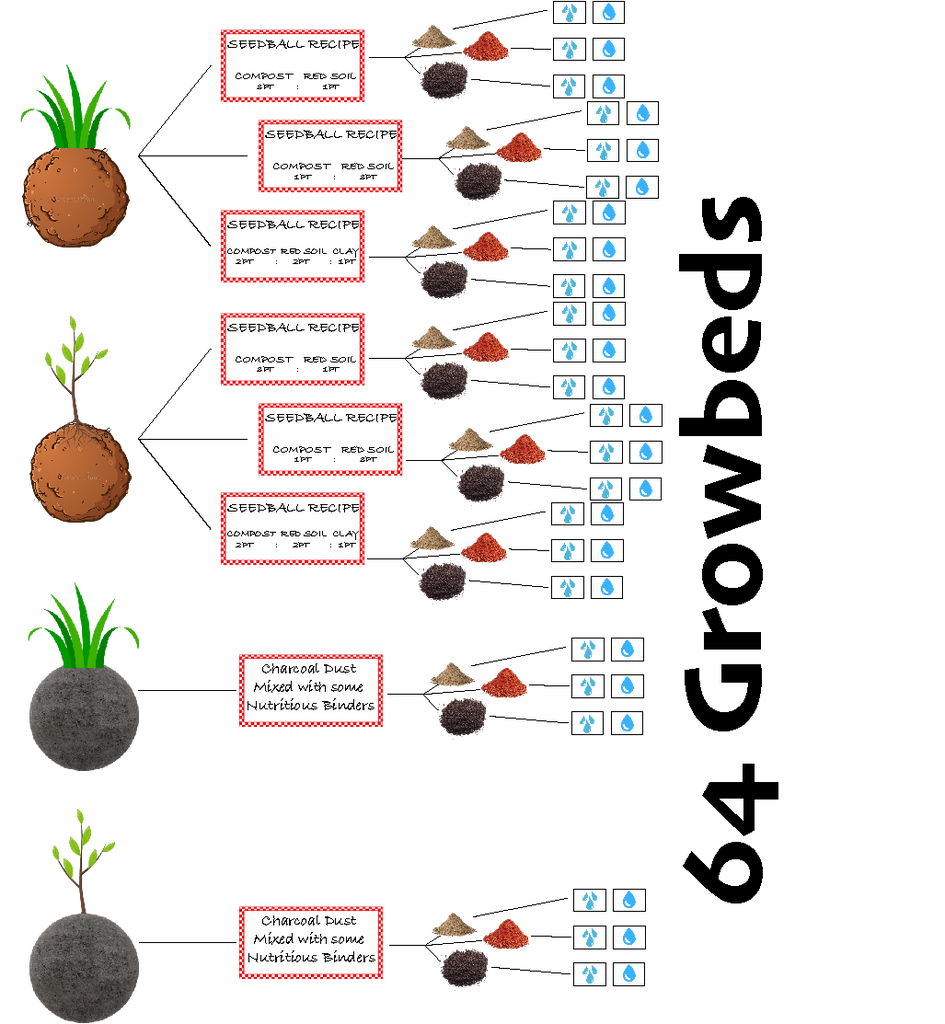Designing the Perfect Seedball
The Design Challenge
My goal is to develop Seed Balls ideal for Kenyas Climate, Weather, Soil and Herbivores. The ideal and perfect seedball would work in the environment and climate in a specific or various regions of Kenya.
Summary of Research
In Kenya, environmental problems seem to be ever-evolving and an everlasting issue. Has a whole, desertification threatens the livelihoods of millions; without the fertile soil that was there some 10 years ago, many areas of Kenya have become dry with hard and rough soil threatening the farming capabilities of many Kenyan families. According to ReliefWeb.int “The Kenyan government has released a report warning that millions of Kenyans are increasingly threatened by desertification.” The problem not only lies within farming communities, without grasslands many habitats and ecosystems are threatened. Deprived of the grass, food chains will crumble and the animal habitats that Kenya is known for will not be what they once were. Desertification has been exacerbated by excessive land use (tragedy of the commons), rise in populations, infrastructure projects, and human impact as a whole. Deforestation in the colonial period and the steady timber industry here in Kenya have cut down on the safeguards that hold the dessert back. In almost 50 years, Kenyan’s tree coverage went from an astounding 10% in 1963 to only 6% in 2012 and it was estimated that the country was losing 12,000 hectares of forest annually. This deforestation has destroyed the habitats of many important animal species that we should strive to protect. Without swift action and steady long-lasting commitment, deforestation and desertification could cut down on Kenyan’s eco-tourism, tea, flower, and energy industries.
There are quite a few solutions to desertification and deforestation. After brainstorming some solutions, it seems that making seedballs for Kenya would be the natural inclination. Seedballs would work well because of there simplicity to make (after finding the perfect recipe), the available natural resources, and the creative dispensary systems at hand or in the works, all things that the Kenyan society would want and need in this fight against deforestation and decertification. After considering multiple well thought out solution to the problem, seedballs has been picked to be the solution that will be prototyped, tested, and shared. This whole project will be me refining a technological solution, in this case seedballs, that reduces impacts of human activities on natural systems by helping re-grow the damage down by humans.

For the making and testing of the seedballs, we have chosen to use a system much like the one shown to the left. We will be making seedballs witch have Cenchrus ciliaris (a type of grass) and Acacia Xanthophloea (a type of Acacia tree). For each species we will make 2 recipes: 1 part compost 3 parts red soil, and 2 parts compost 2 parts red soil and 1 part clay. We will also test the BioChar seedballs, with grass and tree recipes, as well as regular seeds that are thrown on top of the soil to gather as much useful data as possible and provide a control group for the experiment. As a side note, you will see that we also made half of the batches with chili power as another small variable. This will test if the seedballs will benefit from having a natural pesticide such as chili powder. Then, each recipe will go into 4 different soil types, Red soil like you would find around the rift valley, Black cotton soil found in Mwea, Athi, Kapiti, Kano or Trans Mara, Sandy soils found in arid or semi-arid areas of northern and north-eastern Kenya, and the coastal regions and a combination of red soil and compost in order to show us the most ideal condition in the most fertile soil. These beds will be watered one of two different ways; the natural way, relying on the weather patterns and climate of Nairobi and a simulated rainy season where I will water it much like rainy seasons here in Kenya. There will be 100 seedballs in each crate, 50 chili, 50 regular. The large numbers will give us good data instead of relying on chance.
I will be sharing the raw data that I will receive from measuring and recording the growth of the grass and saplings. I have decided to track the number of seedlings that have sprouted. This, hopefully, will give me a pretty good idea of what went well within the seedballs, as well as, the pros and cons of each recipe or area of planting. After the data is collected and the experiment is as good as done, I will start analyzing the information and making conclusions on my conclusions page. The hope is that with the information given the school, BioChar, and I will have useful knowledge that can help with fighting the deforestation and desertification crisis, and if not we will have enough to do another, more informed, experiment. Bellow, you can see a live spreadsheet of the data collection.
Link to Process Journal & Final Reflection Video
Link to Project Process Journal